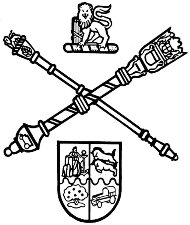|
Bushman-Relics Protection Act, 1911
The Bushman-Relics Protection Act, 1911 was a South African Act to protect drawings, paintings, petrographs created by San people or other aboriginals obtained from graves, caves, rock-shelters and shell-mounds from being removed from the Republic without a permit being issued. Content of the Act The following is a brief description of the sections of the Bushman-Relics Protection Act, 1911: Definitions and interpretation ;Section 1 Defines the explanations of keywords in the Act as to what a Bushman-relic is and who is the Minister responsible. ;Section 2 Defines that a Bushman-relic cannot be removed from the Republic without a written permit from the Minister, and what documents are needed to accompany the application for a permit. ;Section 3 Defines the penalties if found guilty of an offence as a fine of a maximum of £50 or imprisonment of up to 3 months on failure to pay the fine. ;Section 4 Defines the Governor-general's ability to make regulations to carry out the object ... [...More Info...] [...Related Items...] OR: [Wikipedia] [Google] [Baidu] |
Parliament Of South Africa
The Parliament of the Republic of South Africa is South Africa's legislature; under the present Constitution of South Africa, the bicameral Parliament comprises a National Assembly and a National Council of Provinces. The current twenty-seventh Parliament was first convened on 22 May 2019. From 1910 to 1994, members of Parliament were elected chiefly by the South African white minority. The first elections with universal suffrage were held in 1994. Both chambers held their meetings in the Houses of Parliament, Cape Town that were built 1875–1884. A fire broke out within the buildings in early January 2022, destroying the session room of the National Assembly. The National Assembly will temporarily meet at the Good Hope Chamber. History Before 1910 The predecessor of the Parliament of South Africa, before the 1910 Union of South Africa, was the bicameral Parliament of the Cape of Good Hope. This was composed of the House of Assembly (the lower house) and the Legis ... [...More Info...] [...Related Items...] OR: [Wikipedia] [Google] [Baidu] |
San People
The San peoples (also Saan), or Bushmen, are members of various Khoe, Tuu, or Kxʼa-speaking indigenous hunter-gatherer cultures that are the first cultures of Southern Africa, and whose territories span Botswana, Namibia, Angola, Zambia, Zimbabwe, Lesotho and South Africa. In 2017, Botswana was home to approximately 63,500 San people (roughly 2.8% of the population) making it the country with the highest number of San people. Definition The term "San" has a long vowel and is spelled Sān (in Khoekhoegowab orthography). It is a Khoekhoe exonym with the meaning of "foragers" and was often used in a derogatory manner to describe nomadic, foraging people. Based on observation of lifestyle, this term has been applied to speakers of three distinct language families living between the Okavango River in Botswana and Etosha National Park in northwestern Namibia, extending up into southern Angola; central peoples of most of Namibia and Botswana, extending into Zambia and Z ... [...More Info...] [...Related Items...] OR: [Wikipedia] [Google] [Baidu] |
